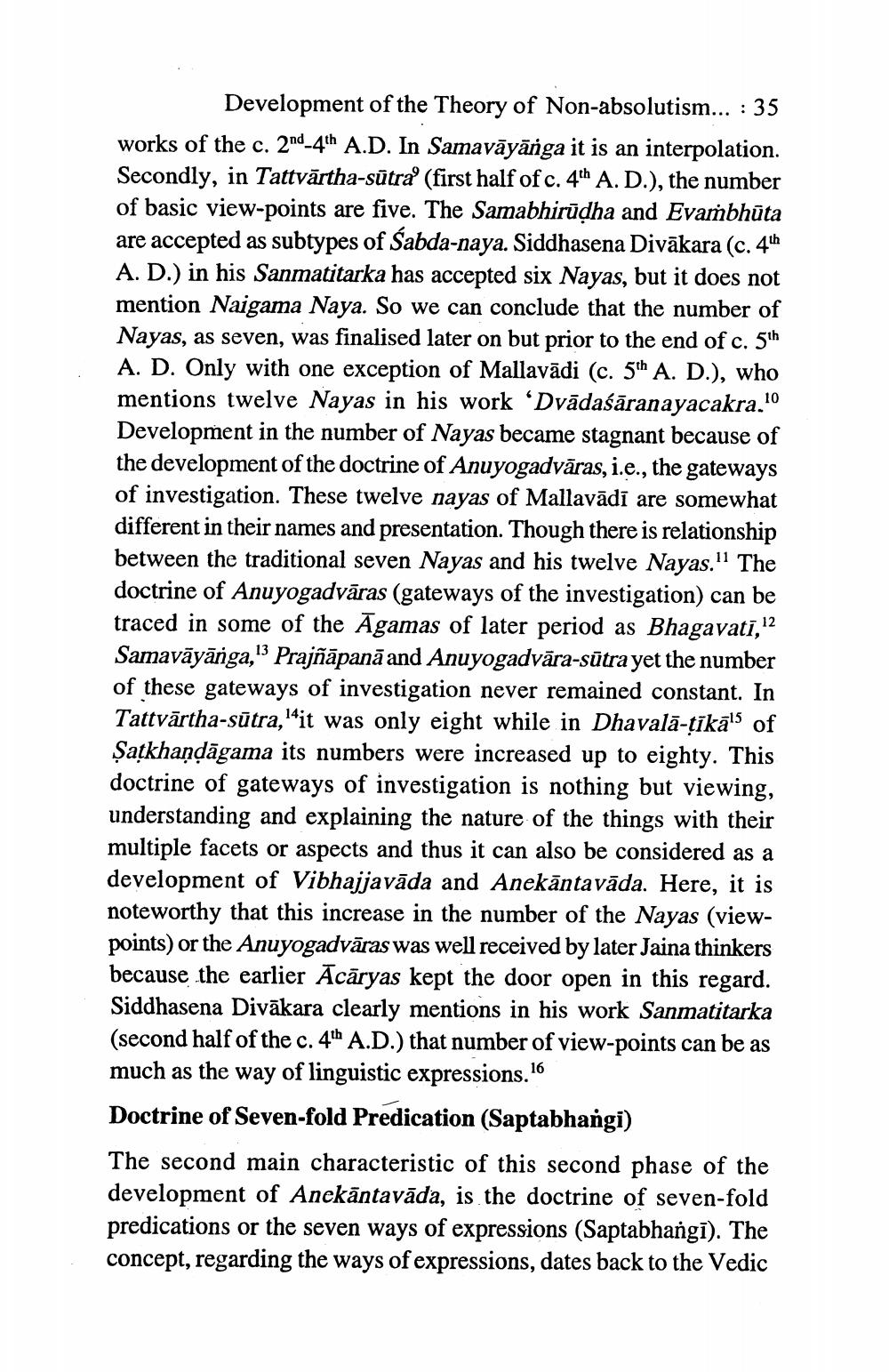________________
Development of the Theory of Non-absolutism...: 35 works of the c. 2nd-4th A.D. In Samavāyānga it is an interpolation. Secondly, in Tattvärtha-sūtra' (first half of c. 4th A. D.), the number of basic view-points are five. The Samabhirūḍha and Evambhūta are accepted as subtypes of Śabda-naya. Siddhasena Divākara (c. 4th A. D.) in his Sanmatitarka has accepted six Nayas, but it does not mention Naigama Naya. So we can conclude that the number of Nayas, as seven, was finalised later on but prior to the end of c. 5th A. D. Only with one exception of Mallavadi (c. 5th A. D.), who mentions twelve Nayas in his work 'Dvādaśāranayacakra.10 Development in the number of Nayas became stagnant because of the development of the doctrine of Anuyogadvaras, i.e., the gateways of investigation. These twelve nayas of Mallavādī are somewhat different in their names and presentation. Though there is relationship between the traditional seven Nayas and his twelve Nayas." The doctrine of Anuyogadvāras (gateways of the investigation) can be traced in some of the Agamas of later period as Bhagavati,12 Samavāyānga,13 Prajñāpanā and Anuyogadvāra-sūtra yet the number of these gateways of investigation never remained constant. In Tattvärtha-sūtra, "it was only eight while in Dhavala-ṭīkā1 of Satkhaṇḍāgama its numbers were increased up to eighty. This doctrine of gateways of investigation is nothing but viewing, understanding and explaining the nature of the things with their multiple facets or aspects and thus it can also be considered as a development of Vibhajjavāda and Anekāntavāda. Here, it is noteworthy that this increase in the number of the Nayas (viewpoints) or the Anuyogadvāras was well received by later Jaina thinkers because the earlier Acaryas kept the door open in this regard. Siddhasena Divākara clearly mentions in his work Sanmatitarka (second half of the c. 4th A.D.) that number of view-points can be as much as the way of linguistic expressions.16
13
Doctrine of Seven-fold Predication (Saptabhangi)
The second main characteristic of this second phase of the development of Anekāntavāda, is the doctrine of seven-fold predications or the seven ways of expressions (Saptabhangi). The concept, regarding the ways of expressions, dates back to the Vedic




